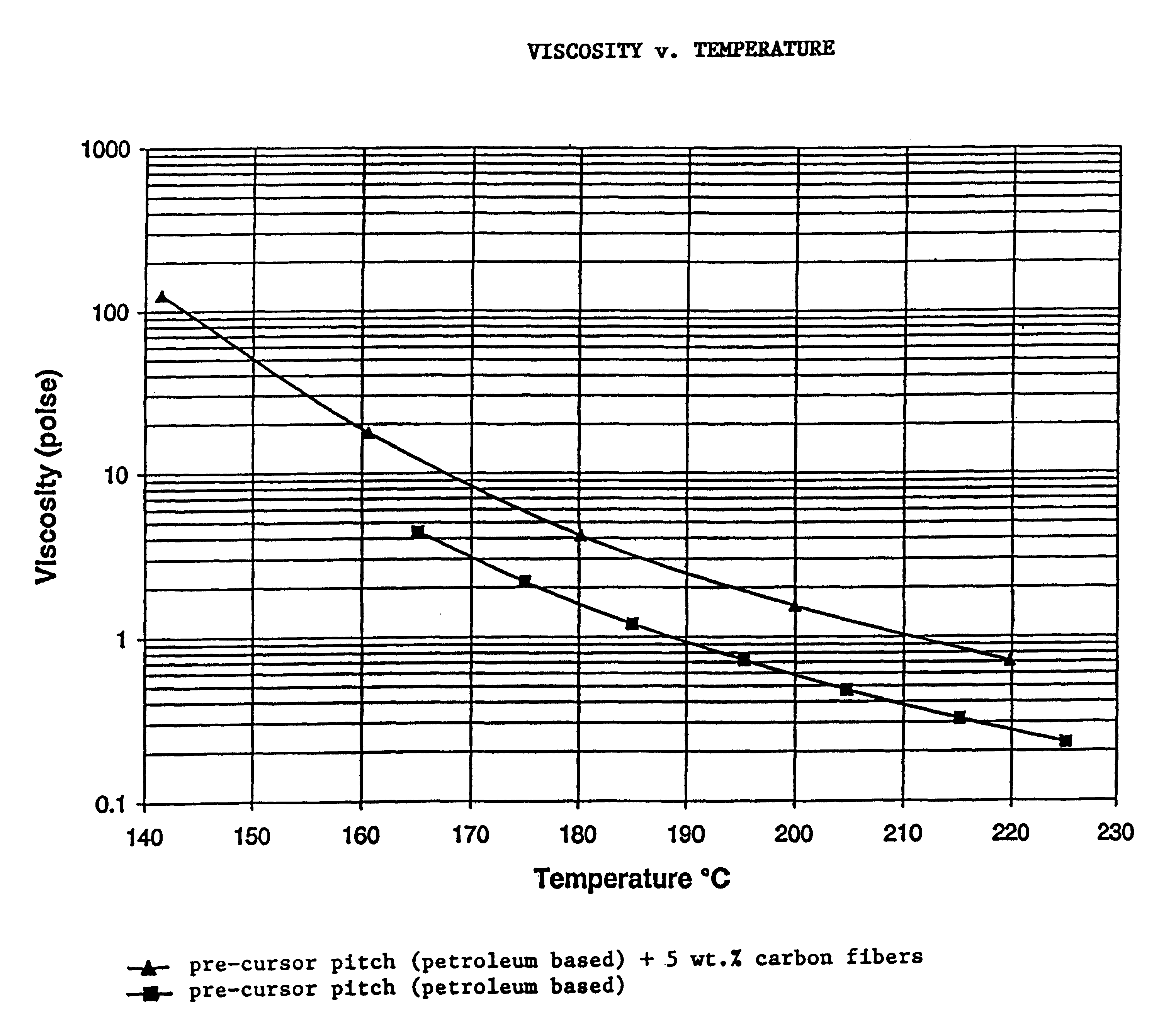Carbon fiber binder pitch
a carbon fiber and binder technology, applied in the field of carbon fiber binder pitch, can solve the problems of inability to homogeneously disperse the fibers in the electrode mix prior, undesirable increase in transverse (against grain) cte, and lower strength, and achieve the effect of virtually impossible homogeneous distribution of bundles into individual mono-filaments
- Summary
- Abstract
- Description
- Claims
- Application Information
AI Technical Summary
Benefits of technology
Problems solved by technology
Method used
Image
Examples
Embodiment Construction
)
In describing the preferred embodiment of the present invention, reference will be made herein to FIGS. 1-6 of the drawings in which like numerals refer to like features of the invention. Features of the invention are not necessarily shown to scale in the drawings.
It has now been shown that fiber bundles with or without sizing may be dispersed into randomly oriented, substantially single mono-filaments in a carbon body by blending the carbon fibers in a pitch binder at a temperature at which the pitch preferably has a viscosity less than about 5 poise, more preferably about 0.1 poise at a temperature of about 260.degree. C. to about 140.degree. C. In accordance with the present invention, up to at least about 0.5 wt. % to about 10 wt. % carbon fibers (based on a weight of the pitch) randomly oriented in pitch may be made as a fiber pitch binder for subsequent homogenous distribution of fibers in carbon bodies having a longitudinal CTE of about -0.5.times.10.sup.6 to less than 0.14....
PUM
| Property | Measurement | Unit |
|---|---|---|
| Fraction | aaaaa | aaaaa |
| Angle | aaaaa | aaaaa |
| Angle | aaaaa | aaaaa |
Abstract
Description
Claims
Application Information
 Login to View More
Login to View More - R&D
- Intellectual Property
- Life Sciences
- Materials
- Tech Scout
- Unparalleled Data Quality
- Higher Quality Content
- 60% Fewer Hallucinations
Browse by: Latest US Patents, China's latest patents, Technical Efficacy Thesaurus, Application Domain, Technology Topic, Popular Technical Reports.
© 2025 PatSnap. All rights reserved.Legal|Privacy policy|Modern Slavery Act Transparency Statement|Sitemap|About US| Contact US: help@patsnap.com



